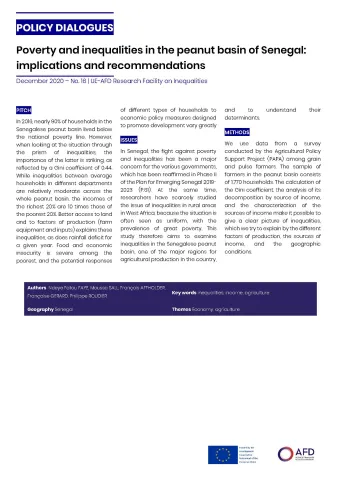Share the page
Poverty and inequalities in the peanut basin of Senegal: implications and recommendations
Published on

In 2016, nearly 90% of households in the Senegalese peanut basin lived below the national poverty line. However, when looking at the situation through the prism of inequalities, the importance of the latter is striking, as reflected by a Gini coefficient of 0.44. While inequalities between average households in different departments are relatively moderate across the whole peanut basin, the incomes of the richest 20% are 10 times those of the poorest 20%. Better access to land and to factors of production (farm equipment and inputs) explains these inequalities, as does rainfall deficit for a given year. Food and economic insecurity is severe among the poorest, and the potential responses of different types of households to economic policy measures designed to promote development vary greatly
Useful Information
-
Authors
-
Ndeye Fatou FAYE, Moussa SALL, François AFFHOLDER, Françoise GERARD, Philippe ROUDIER
-
Edition
-
16
-
Number of pages
-
2
-
Collection
-
Policy Dialogues
-
Other languages
